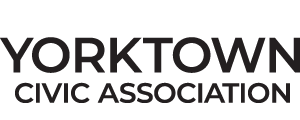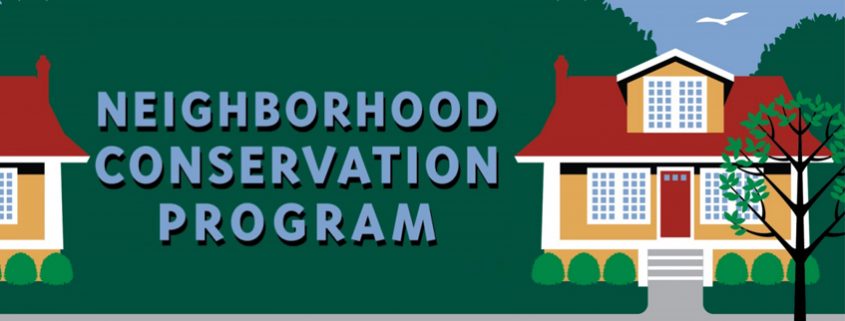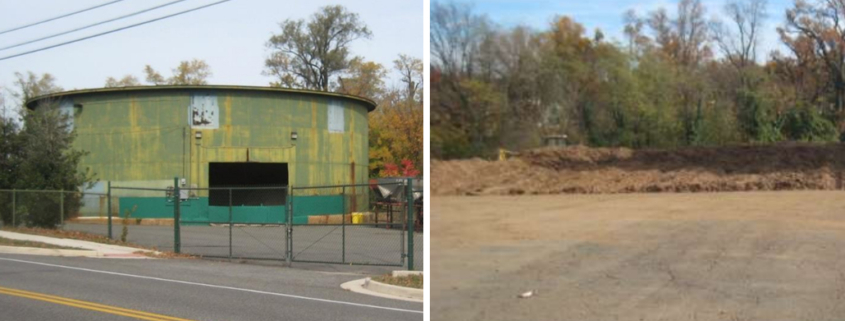Draft – 1/30/2005
Pedestrian Safety and Sidewalks
1) Fund construction of continuous stretches of sidewalk on any street where the County’s current 60% petition threshold is met by residents. If residents of several streets meet the petition threshold simultaneously, priority will be given to streets currently without any sidewalks and streets with the greatest current or potential pedestrian traffic
2) Support installation of sidewalks in segments involving no more than 3 properties through the County’s Missing Link program in any case where 100% of the affected households support the sidewalk. If multiple requests, priority will be determined by pedestrian traffic volume and safety concerns.
Traffic Safety
3) Fund the long-standing plans to re-design the intersections at Lee Highway/George Mason Drive and Lee Highway/Harrison Street. Include a left turn lane from the two side streets onto Lee Highway.
4) Include the full length of the neighborhood’s three arterial streets George Mason Drive, Yorktown Boulevard, and Harrison Street — in Arlington’s new Arterial Street Traffic Calming program (Harrison Street from Lee Highway to N. 26th Street is one of the program’s original selections). Possible options may include (but should not be limited to): a) reducing George Mason Drive between Lee Highway and Yorktown Boulevard to 2-lanes with wider medians and bike lanes; b) installation of a median and traffic speed indicator warning on Yorktown Boulevard and reduction of the speed limit to 25 mph; and c) installation of nubs at the Harrison Street intersections with 26th Street, 27th Street, and Little Falls Road (the Little Falls intersection is being considered for nubs as part of a Neighborhood Traffic Calming project for Little Falls Road).
5) The Neighborhood Traffic Calming program has been used quite successfully in this neighborhood to address traffic safety issues. This program should be given adequate funding to continue to address neighborhood traffic issues throughout Arlington. Several additional candidate streets exist in this neighborhood and should be considered for assistance, in particular: 26th Street N. west of Harrison Street; 28th Street N. between Yorktown Boulevard and Greenbrier Park; N. Greenbrier Street north of 26th Street N.; and N. Florida Street north of 26th Street. Consideration should also be given to replacement of the existing speed humps on 26th Street N. between Harrison Street and George Mason Drive due to their deteriorating condition.
6) The following intersections should be evaluated for nubs, 3-way/4-way stops or other appropriate safety improvements:
o 26th Street N. and N. Harrison Street
o 27th Street N. at N. Harrison and at N. Greenbrier Street
o 26th Street N. at George Mason Drive
o N. Brandywine Street at Yorktown Boulevard
o 28th Street N. at Yorktown Boulevard
o N. Florida Street at Little Falls Road
o Old Dominion Drive and 29th Street N.
7) Bus shelters should be considered at the following locations (trash receptacles should also be provided):
o Yorktown Boulevard at Yorktown High School
o George Mason Drive
o Additional locations on Lee Highway.
8) The County’s zoned parking program should be continued, along with consideration of nighttime and weekend restrictions where appropriate. Possible areas for consideration within the neighborhood, based on request and approval by immediate residents, might include streets adjacent to the following:
o Yorktown High School
o Marymount University, including increased enforcement to encourage students not to park on neighborhood streets.
o Lee/Harrison Shops
o Garden City Shopping Center.
Commercial Activity
The following recommendations apply to the Garden City shopping area at the intersection of Lee Highway and George Mason Drive:
9) The County should undertake a comprehensive code enforcement review of the Garden City shopping area premises.
10) Replace existing concrete wall and sidewalk with landscaping at the front of the Center and repair and widen the sidewalk adjacent to the shops. Screen dumpsters with attractive, fenced cages and keep them closed. Remove abandoned equipment from the rear of the property. Include landscaping and screening from the adjacent neighbors at the rear of the center. County alley behind the Center and its adjoining grass strip on the north side should be cleaned, resurfaced and regularly maintained. (Also see comments under Parking).
11) Re-stripe the existing parking areas, both in the front and to the rear of the Center to increase the number of spaces. Curbs or similar structures should be added to the alley, behind the Center which could then be reconfigured to accommodate additional, possibly metered, parking.
12) Upgrade the stores with paint, uniform signage and facades, including new awnings or similar features. Install attractive pedestrian lighting. Remove or clean up rusting pipes and chimneys.
13) Modify vehicle entrances into the Center to include turning lanes from Lee Highway. Reduce the multiple existing entrances from Lee Highway to one entrance at the east end and one entrance at the west end. Modifications to increase parking at the rear of the building and definition of the alley as an entry and exit method will also facilitate better access to the Center.
Parks
14) Sufficient buffers areas must be established and maintained at Greenbrier Park due to the close proximity of its immediate neighbors and the high level of activity at the park.
15) Hours of operation at Greenbrier Park should be adopted and clearly posted as follows: No sporting events or organized practices should be scheduled prior to 9 a.m. on weekends, and all games and practices should end by 10:30 p.m. 7 days per week. No P.A. system use should occur prior to Noon.
16) Chestnut Hills Park should continue to be focused on toddlers and younger children as an area where they can play safely and conveniently without interference from activities of older children or adults.
17) Recently acquired property for Chestnut Hills Park should be reserved for either (1) children’s activities and recreation or (2) as passive recreational areas (walkways, garden areas, picnic area etc.)
18) The designation of Chestnut Hills Park in the Open Space Master Plan should be changed from Community Open Space to Neighborhood Park.
19) Residential properties adjacent to Chestnut Hills Park currently identified on the County’s General Land Use Plan (GLUP) as Public (i.e. future park land) should have their designation changed to Residential.
20) A portion of Chestnuts Hill Park should continue to be made available for community gardens. Upgrading of this area should be considered in any plan to renovate Chestnut Hill Park.
21) The small park area at Yorktown Boulevard and Old Dominion Drive which was developed as a recent Neighborhood Conservation project should be given a name and should be given a designation as passive open space. An iron fence should be installed along Old Dominion Drive as part of a gateway treatment and to prevent dangerous cut- through pedestrian traffic.
22) Rock Spring Park should continue to receive adequate funding for maintenance and improvements as a nature area. Buffers should be improved in the area of new homes at the end of 30th Street North (east side of park).
Schools
23) Phase II renovations of Yorktown High School should be fully funded in the 2006 County bond election.
o The Building Level Planning Committee must begin the design process in early 2005.
o Construction of planned Greenbrier Park renovations should not begin until the Yorktown BLPC has begun meeting and has had an opportunity to assess the compatibility of the planned park modifications with Phase II plans for the high school.
o Renovations at the high school should NOT result in enrollment increases above the current capacity of 1600 students.
o Adequate buffers should be provided between the school structure and adjacent homes.
o Sufficient off-street parking should be provided for school staff, while avoiding the construction of decked parking structures. Policies should be adopted to discourage students from driving to school.
24) The current Nottingham Elementary School boundaries should be maintained to ensure continuity of education for members of the same family.
Street Lights and Power Lines
25) Arlington County should pursue policies that encourage the undergrounding of power lines in both commercial and residential areas. Costs for performing this work should be spread over a number of years and built into utility rates, rather than be paid through higher taxes.
26) Installation of Carlisle or other examples of improved street lighting should be considered at locations based on the following criteria: existing lighting that is inadequate or non-existent, high pedestrian traffic, poor or dangerous placement of existing light poles. Frequently mentioned candidates for improved lighting include these neighborhood streets:
o 26th Street North
o N. Florida Street
o N. Greenbrier Street
o N. Harrison Street
o Old Dominion Drive (access road)
Public Safety
27) Traffic enforcement should be increased in all areas of Arlington.
28) The Arlington Alert system has not achieved the coverage necessary to provide meaningful notice to large numbers of residents and should be supplemented with a traditional system of sirens.
Land Use and Zoning
29) Arlington County should continue to consider policies designed to reduce inappropriate in-fill development, while maintaining a reasonable ability of property owners to make improvements to their homes.
30) The County should consider increasing setback requirements, especially on corner lots.
31) The Unified Residential Development use permit ordinance should undergo a complete review and be updated as needed based on actual results and effectiveness since the process was first established.
32) Greater coordination must be ensured between all county offices involved in the various aspects of new home construction to guarantee proper application of zoning rules and regulations. A greater commitment should also be given to strong enforcement of building codes and zoning ordinances.
33) Developers constructing new homes at the same location should be required to install sidewalks.
Preservation and Neighborhood Beautification
34) Encourage preservation/restoration of historic mansion owned by Knights of Columbus on Little Falls Road.
35) Repair stone monument at corner of Rock Spring Road and Old Dominion access road.
36) Planning should be undertaken for the undeveloped public property at the end of N. Emerson Street between 25th Place N. and 26th Street N. to consider such options as installing a sidewalk and/or bicycle path and landscaping or opening it to through traffic.
37) A complete neighborhood historical survey should be undertaken as soon as possible to identify historic homes.



